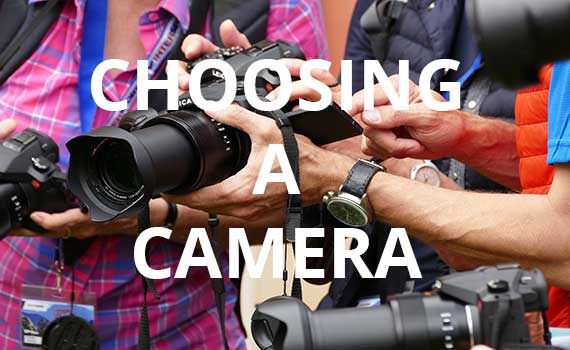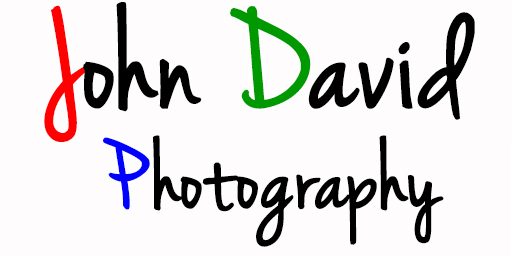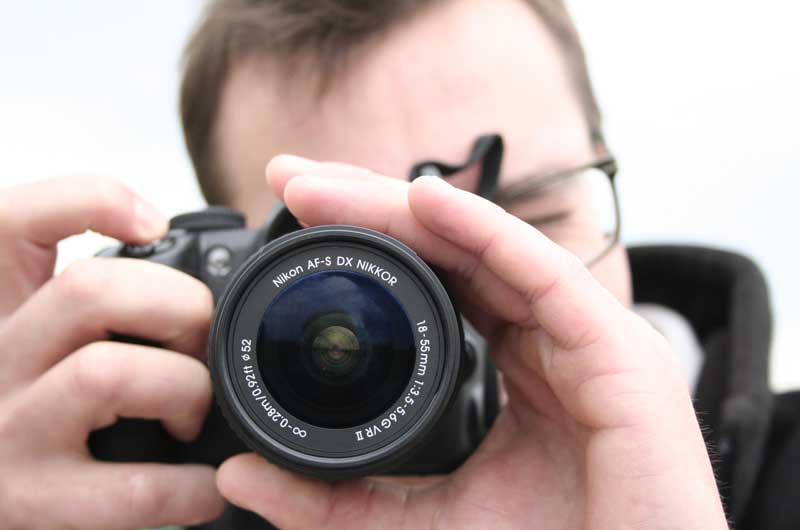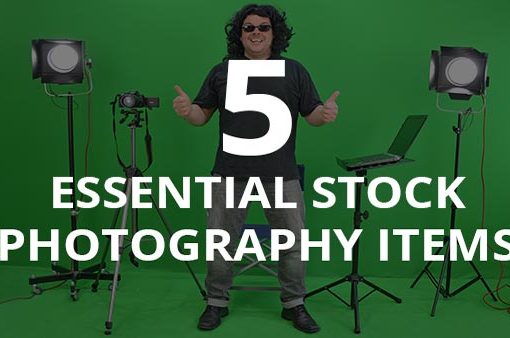
The single most important tool for a stock photographer is a camera. All the other tools such as lenses, flash units, filters, tripods etc are no use without a camera. Here are some basic things to consider when choosing a camera.
If you are serious about becoming a stock photographer, your options when choosing a camera are fairly simple. The stock agencies will usually accept only photographs taken with cameras which meet some minimum specifications. The most important factor is the physical size of the image sensor inside the camera. This is not the same as the “megapixel” size. Megapixels relates to the amount of “pixels” or “dots”. We will explain the difference between megapixels (MP) and physical size in another article.
Acceptable image sensors
- Full Frame. These sensors are 35mm x 24mm in size. This is the same size as the old fashioned 35mm “negatives” used by many film cameras.
- APS-C. These sensors are 23.6mm x 15.6mm in size. The dimensions can vary by 1mm or so between specific manufacturers and models.
- Micro Four Thirds. These sensors are 17.3mm x 13mm.
There are, of course, some exceptions to this list. Choosing a camera with one of these sensor sizes is a very important step towards ensuring your photographs are acceptable to most image buyers.
Other considerations
There are a myriad of other factors you need to consider when choosing a camera. Below is a list of features which will ensure you choose a suitable camera.
- Interchangeable lenses. Be aware that most camera manufacturers do not use a standard design for attaching lenses to their cameras. Check that a good range of lenses are available for any camera you choose.
- RAW file format. Almost every camera is capable of storing photographs on a memory card in the “jpg” or “jpeg” format. It is important to ensure that your camera can also store photographs in a “RAW” format. This will ensure your photographs contain the most amount of detail possible. This allows more flexibility when editing your photographs and preparing them for sale. Camera manufacturers often use their own name to describe RAW.
- Manual controls. Modern cameras have “automatic” features. They can ease the task of preparing to take a photograph. Auto focus, auto exposure, & program mode are just some terms you will hear. Whilst these features perform excellently, they can restrict your options when photographing. Ensure your camera has the option to manually over-ride these features.
- Viewfinder. There are 2 types of viewfinder. Optical viewfinders are typically found in DSLR cameras. They use prisms and mirrors to look through the lens. Electronic viewfinders contain a miniature screen. Most cameras have a screen on the rear. Some cameras have no viewfinder, using the screen instead.
- Confusing terms. There are many terms. DSLR, APS-C, CSC, MFT, Micro4/3, compact system cameras. Be sure to research any camera.
- Hold it in your hands. When choosing, it is helpful to make a list of suitable cameras. Hold some cameras in your hands. Are the controls comfortable to reach? Is the viewfinder comfortable on your eye? Is the camera easy to grip?
Important things to avoid
Here are some common camera types to avoid. These will generally produce photographs which are NOT acceptable to image buyers, regardless of the capabilities or experience of the photographer.
- Mobile phones. The sensor in these is typically far too small to produce photographs which look good on a large screen or large print.
- Compact cameras. These are not the same as compact system cameras. Compact cameras have non interchangeable lenses. They usually fit into a pocket. They use a sensor similar to the sensor used by mobile phones.
- Bridge cameras. These cameras often have an appearance and specification list similar to a DSLR. They can be identified by having a non interchangeable lens. They are usually very bulky. The built in lens usually offers a dramatic zoom range. Again, they use a sensor very similar to a mobile phone.
- Film cameras. Unless you know exactly what you are doing and have a lot of experience, a film camera is going to be unsuitable.
Costs
When choosing a camera which uses interchangeable lenses, it’s important to consider the fact that you’ll also need to buy at least one lens. All the manufacturers usually offer at least one “kit” which is a camera body with one or two lenses bundled together to form a bargain deal.
- £300. A budget as low as £300 to £400 will buy a brand new camera & lens. This will be capable of taking photographs acceptable to all stock agencies.
- £1000. A budget as low as £1000 will usually buy a camera with one or two lenses. This would be regarded as advanced enthusiast or semi-professional grade.
- £5000. Full professional grade cameras can be somewhat more expensive. Professional DSLR cameras can cost in excess of £5,000 for top of the range models.
- 2nd hand. It is possible to save some money by buying second hand equipment. Choosing a camera body at the lowest prices should be done with care. Considering how cheaply a brand new camera can be bought, some of the oldest second hand digital cameras will struggle to produce the quality of photographs required. We would recommend avoiding second hand cameras which were low in the manufacturers range when new. However, if you look at cameras which were high end models when new, there are some suitable second hand cameras available. There are a good amount of high quality second hand lenses available which can offer substantial savings.




